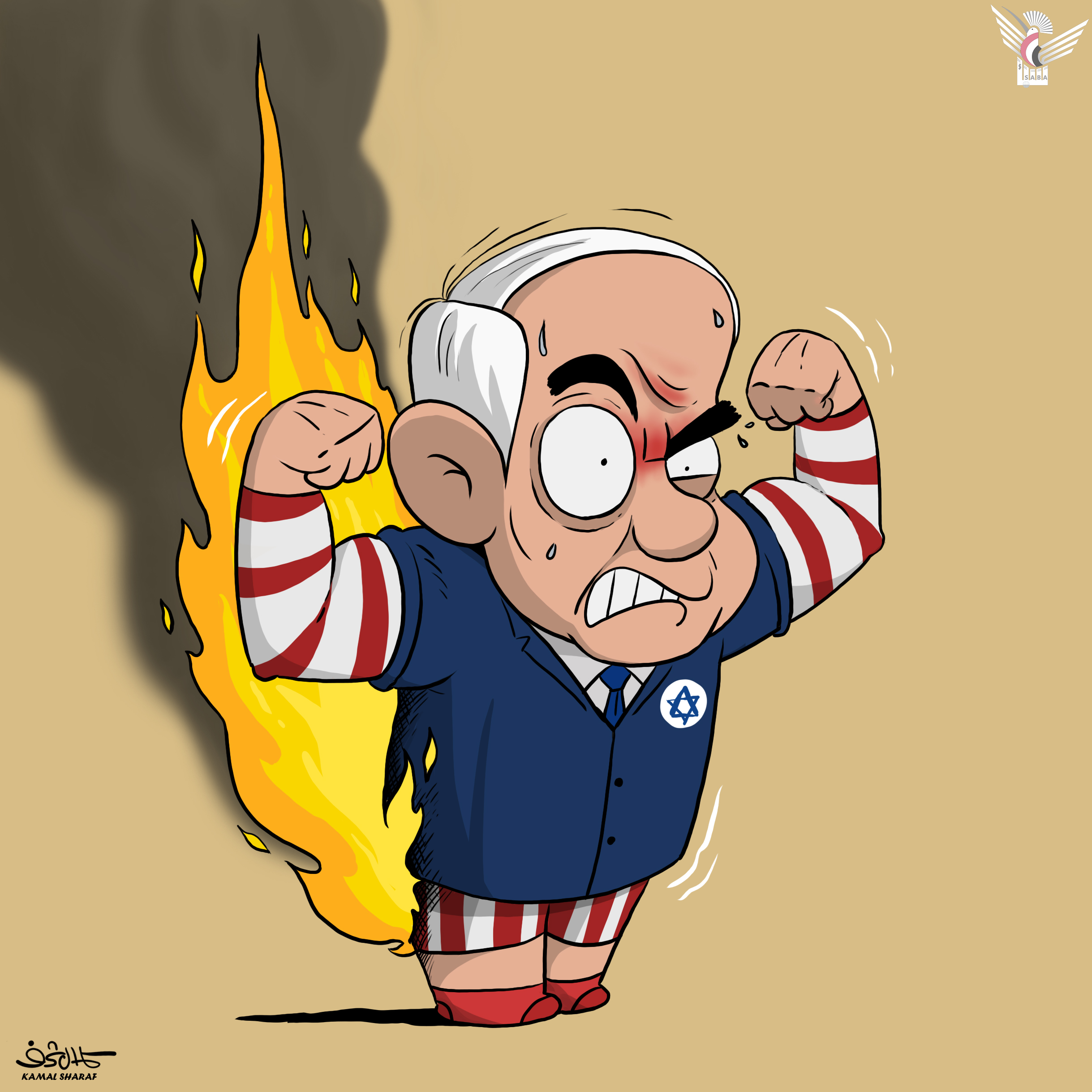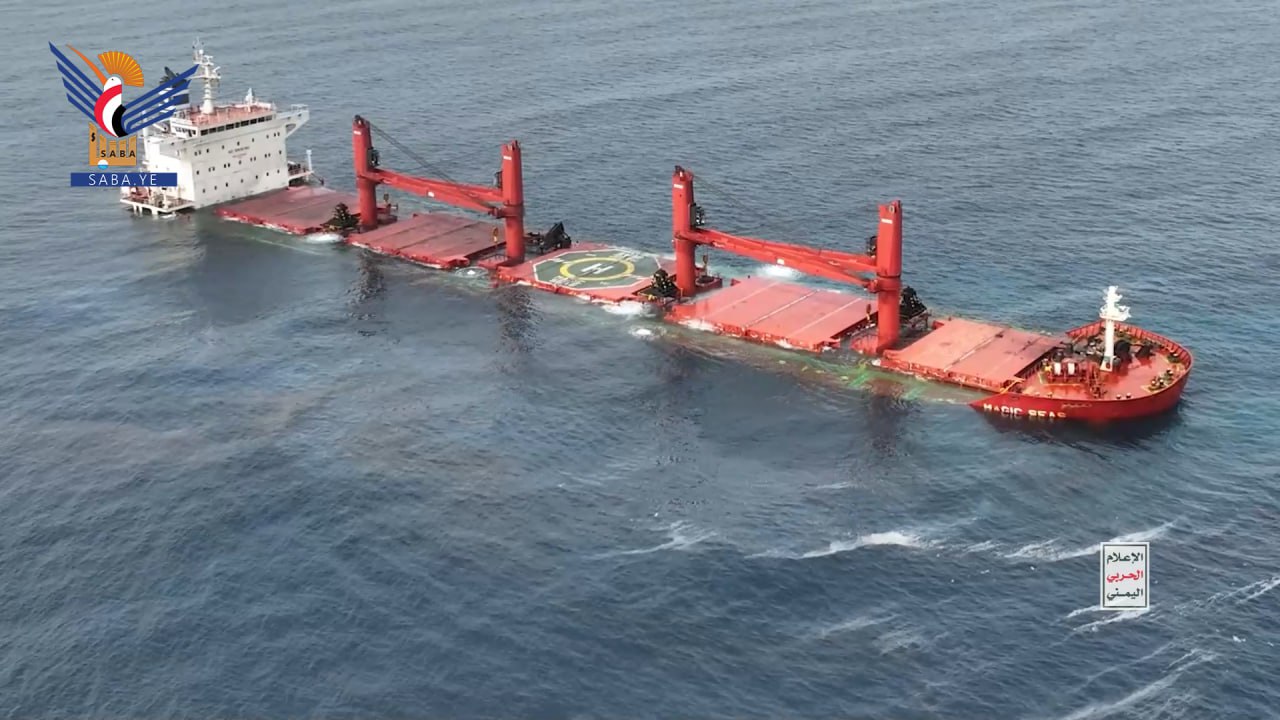Sana'a – Saba:
In a continuing qualitative escalation, the Yemeni Armed Forces have expanded the scope of their naval operations, announcing within two days the sinking of two ships belonging to foreign companies that had dealt with the ports of the Zionist entity. This step represents a qualitative shift in the course of the open battle in support of Gaza.
The expansion of the Yemeni naval response represents a direct extension of the escalating aggression against Gaza.
Sana'a has moved to an advanced stage of escalation, pushing the front line deeper into the sea, transforming the shipping lanes linked to the occupation into an open operational field, as part of a precise strategy aimed at breaking the siege and easing the pressure on Palestinians in Gaza.
The sinking of the ship "Magic Seas" marked a turning point in the Yemeni response, as warnings turned into decisive action.
The operation marked the first concentrated naval strike targeting the enemy's logistical support lines, which continues to commit daily massacres against civilians in Gaza and relies on sea lanes to finance its aggression and maintain its siege.
With the same momentum, the ship "ETERNITY C" was sunk while en route to the port of Umm al-Rashrash, in a concentrated strike carried out with cruise and ballistic missiles and a drone boat.
This second strike, carried out within hours, established the principle of directly targeting every supply line serving the occupation, as part of an escalating trend that goes beyond warnings to demonstrate the ability and effectiveness of the response in disrupting the enemy's logistical support.
The escalation of these operations comes amid continuing Israeli crimes against civilians in Gaza. As the scope of the genocide expands, the Yemeni position intensifies. This stance, which is not content with condemnation or statements, is also advancing with direct military action, in a clear effort to support the Palestinians on various fronts.
Official statements issued by the armed forces linked the targeting of ships to the ongoing aggression and blockade imposed on the Gaza Strip. The statements emphasized that every ship operating in the occupied ports falls within the scope of legitimate targeting, and that operations will continue until the massacres cease and restrictions on the besieged Strip are lifted.
The nature of the operations and their chronology indicate that the Yemeni military decision-making process is guided by a clear strategic plan, which begins with monitoring targets, then issuing warnings, and then proceeds to implementation when a violation is proven. This model reflects an organized field capability that responds to the worsening humanitarian catastrophe in Gaza and the deterioration of regional and international positions.
In contrast to this organized field performance, the map of international positions is unfolding. The major powers continue to provide political and military cover for the occupation, directly contributing to prolonging the Zionist aggression on Gaza, while a broad Arab silence provides additional room for escalation of crimes.
In this context, the Yemeni front is emerging as one of the few practical paths in the region that is truly taking the initiative and clearly contributing to undermining the occupation's capabilities, based on a firm, principled commitment to Palestine, independent of any temporary calculations or external balance considerations.
Amid this international impotence and blatant complicity, the humanitarian situation in Gaza is worsening to unprecedented levels. More than two million Palestinians are subjected to a stifling blockade and the direct targeting of infrastructure, health facilities, and civilian facilities. This is one of the most heinous documented mass crimes in contemporary history, perpetrated by the Zionist war machine without pause or accountability.
Analysts confirm that Sana'a has taken the lead in direct action against the aggression on Gaza, through organized field operations paid for by entities linked to the occupation. These operations effectively impact its maritime and commercial routes, increasing the cost of the war waged by the entity on the Strip without pause.
These results are evident in the images of the war media, which accurately documented the sinking of the Magic Seas ship, demonstrating professionalism in execution and clarity of purpose. Yemeni strikes are no longer mere reactions, but rather strategic tools that strike at the heart of the enemy's interests and impose mounting costs on it at multiple levels.
The Hebrew media, in its coverage, expressed increasing concern about these operations and attempted to isolate them from their true context related to Gaza. However, the photographic documentation and the timing of the attacks reaffirmed the close relationship between the Yemeni operations and popular support for the Palestinian resistance.
The Yemeni position has not changed since the beginning of the escalation. Rather, it has evolved from warning strikes to painful strikes, effectively disrupting some shipping lines linked to the occupation and presenting international companies with a new equation: either stop supporting the enemy or enter the realm of direct threat.
Political observers believe that the field effects of these operations do not stop at the Red Sea borders, but extend to the Palestinian interior, where they provide the resistance in Gaza with strong field and moral support, redistribute pressure on the occupation, and disrupt its strategy in managing the battle.
With the sinking of ships and the expansion of naval strikes, Sanaa is charting a different course in supporting Gaza, based on direct action and field costs, at a time when the oil regimes are hiding behind gray positions.
This is a clear practical message that the time for abandonment is over, and that the Palestinian cause still produces those who will defend it in action, not words, and who will pay the cost of support from their own field without waiting for permission or authorization.

| more of (Reports) |




